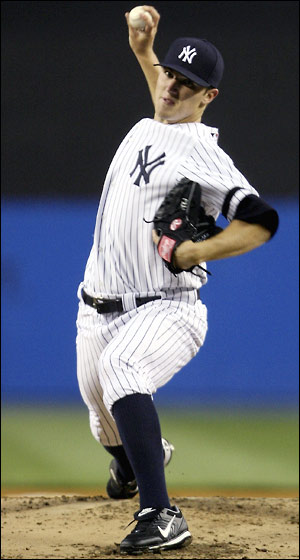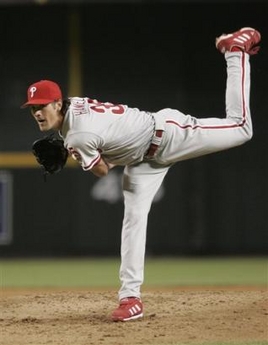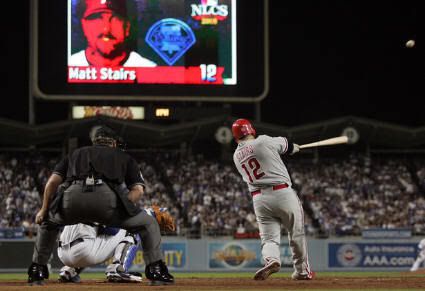In these harsh economic times, I have to wonder why the Yankees think this view is worth $85 per ticket.
They call it the "Batter's Eye View" because the seats are in the Bleachers Cafe, above the batter's eye, i.e. the background against which the hitter at the plate sees the incoming pitches. In the old Yankee Stadium, this was a large area of old bleachers that were painted flat black, but these days, there is a cafe there with tinted glass windows, and the Yankees decided to charge people for the privilege of sitting in that cafe.
These are perhaps not unlike the rooftop seats across Waveland Avenue in Chicago, behind Wrigley Field. Except in that case, the Cubs found a way to make a profit off their neighbor's real estate, and so it's no longer possible to watch every game in the Chicago Cubs schedule for free anymore. The Yankees did them one better, and just incorporated the restaurant (and the lousy view) into the ballpark.
The Yankees, like most of the rest of MLB, have been having some trouble selling tickets, with attendance down over 100,000 from last year's pace to date. They lowered prices on some of the most expensive tickets in the house, but those were so preposterously overpriced to begin with that even some of the new prices are pretty ridiculous. Wow, two seats near the dugout for only $2,500? Yeah, I guess I don't need that used car after all.
But this may be the shadiest and most ridiculous ploy yet. An email I received from the Yankees today offered a special promotion on these seats in the cafe above and behind center field, which nominally cost $125 each. The seats in the sports bar just below this are $90 each. No free food. No free drinks. Just seats. And these about as far from the action as you can get without actually leaving the Stadium.
By contrast, bleacher seats cost just $14 each, and have about the same view (unless you're stuck here).
That's right folks, for almost ten times the price of a bleacher seat, you get...shade. And air conditioning. But wait! Not ten times, not nine times, not even eight or seven times...but for a limited time only, thanks to MasterCard, you can get these seats, with their horrible view of almost everything except the center fielder's back, for just over SIX times the cost of a bleacher ticket (plus TicketMaster fees)! Yay!
The email promo offers you a $40 "discount" on the seats in the cafe for this week's games, i.e. Monday through Thursday nights, which brings them down to just over $90 per seat, with fees. All of these games start at 7:05 PM, so the shade probably isn't necessary. And, since it's supposed to be nice all week, the air conditioning probably isn't needed either.
The normal price for these seats is $125! Where else but Yankee Stadium would you be expected to shell out more than a hundred bucks for such a terrible view?
You know how department stores sometimes offer you "free" stuff to promote things, and to get you to spend money there? They'll offer, say, a watch or a pouch full of cosmetics "with a $50 value" if you spend $100. Except the watch or the cosmetics can't actually be bought in their store or anyone else's. It's produced and packaged expressly for this promotion, so they can say it's got a value of damn near anything they want, because you have no way to prove otherwise.
So you spend your $100.37 to get your watch "with a $50 value", but when you look at it more closely you realize that the watch is made in some sweatshop, has a cheap plastic strap, a cheap digital timepiece, and a cheap plastic fastener. And you're pretty sure you got one nicer than this from a bubble gum machine once. Or the dollar store, you forget which.
Anyway, that's what this promo is like. If you go to the Yankees website and look at their seating and pricing page, they don't list a price for these seats. You have to check the special page for these tickets, because they're being discounted so much that their nominal value has little real meaning.
While you can buy these tickets at full price, I suspect that most of them get sold at a discount, sponsored by a different company each week, probably. They call the view "one of the most unique in the stadium" which of course is true of any seat in the stadium, strictly speaking. Then they jack up the price to unreasonable levels and give you a "discount" so you feel like you're getting a bargain.
On the other hand, the Cubs and the Rays offer similar seats in their parks, so maybe I'm just missing something here. Whatever it is, at those prices, I think I'll keep on missing it, thanks.






























